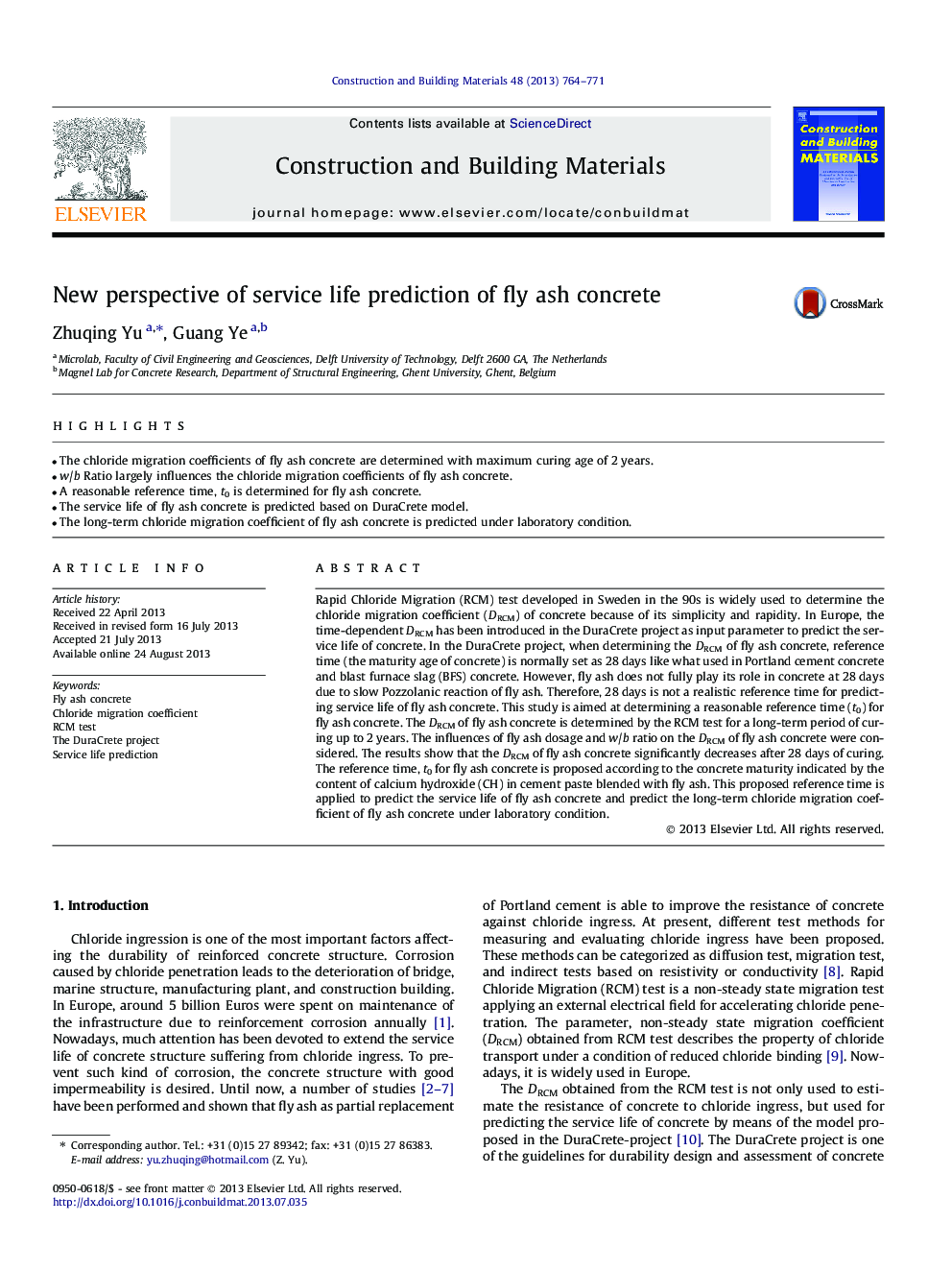| Article ID | Journal | Published Year | Pages | File Type |
|---|---|---|---|---|
| 6725934 | Construction and Building Materials | 2013 | 8 Pages |
Abstract
Rapid Chloride Migration (RCM) test developed in Sweden in the 90s is widely used to determine the chloride migration coefficient (DRCM) of concrete because of its simplicity and rapidity. In Europe, the time-dependent DRCM has been introduced in the DuraCrete project as input parameter to predict the service life of concrete. In the DuraCrete project, when determining the DRCM of fly ash concrete, reference time (the maturity age of concrete) is normally set as 28Â days like what used in Portland cement concrete and blast furnace slag (BFS) concrete. However, fly ash does not fully play its role in concrete at 28Â days due to slow Pozzolanic reaction of fly ash. Therefore, 28Â days is not a realistic reference time for predicting service life of fly ash concrete. This study is aimed at determining a reasonable reference time (t0) for fly ash concrete. The DRCM of fly ash concrete is determined by the RCM test for a long-term period of curing up to 2Â years. The influences of fly ash dosage and w/b ratio on the DRCM of fly ash concrete were considered. The results show that the DRCM of fly ash concrete significantly decreases after 28Â days of curing. The reference time, t0 for fly ash concrete is proposed according to the concrete maturity indicated by the content of calcium hydroxide (CH) in cement paste blended with fly ash. This proposed reference time is applied to predict the service life of fly ash concrete and predict the long-term chloride migration coefficient of fly ash concrete under laboratory condition.
Related Topics
Physical Sciences and Engineering
Engineering
Civil and Structural Engineering
Authors
Zhuqing Yu, Guang Ye,
